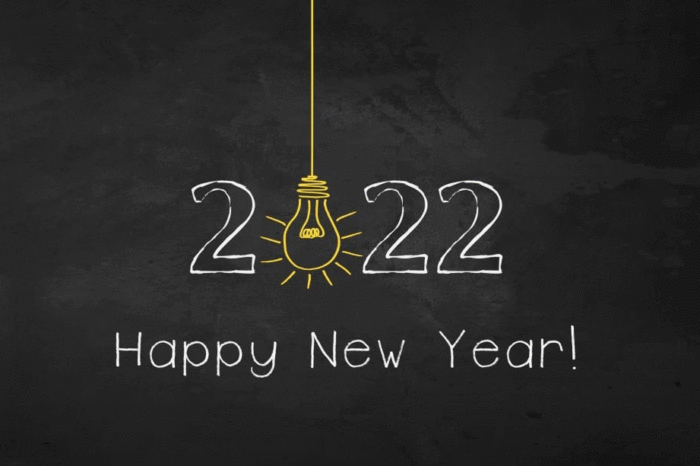The Fine Art of Sales Forecasting
It’s that time of year again. Time for responding to sales management requests for 2022 sales forecasting. But this year it may be more wrapping a story around a riddle that may be an enigma … unless you have a crystal ball.

In other words, “what do you control”? Perhaps the sales forecasting question should be “what will organic growth be” (or in some cases “unit growth”) given the unprecedented experiences we’ve all faced this year.
As we all get closer to forecasting 2022, I can never recall a year where coming close to a reasonable forecast is less assured for accuracy than ever before.
As a former representative of an agency who did supplier specific forecasting for over 30 years, I truly enjoyed the experience. It allowed me to use my educational training as I had earned an economics degree in college. Forecasting for our manufacturers also provided me with another reason to call various customers, review notes addressing expectations of our OEMs, contractors, and MRO accounts, along with pursuing information from various trade journals on both local and national perspectives. I enjoyed the process.
What’s the “Right” Number? Mine? Yours? What You Want to Hear?
We gathered the information and shared our finding with manufacturers and even a few of our distributors who asked us to share our findings with them as we worked with them to target specific jobs or customers. It was a value-added we provided to our distribution partners.
I specifically remember two instances with manufacturers. The first was presented by a major manufacturer’s VP of Distribution Sales. He called and thanked me for the documented response and asked me to redo it showing a larger anticipated increase as his direct boss had requested a specific number higher than the one I had given. When I asked why he had not told me in advance of his need for a specific percentage, he said he used my forecasting along with a few others when they failed to meet the number requested by management as being more realistic and fact based rather than emotional.
Another example was similar. Another larger manufacturer specifically asked for a number that ,at least to many of the representatives, was unrealistic, but he told us prior to the exercise what to expect and what he needed. Remember, we work for manufacturer sales management so we’re in this together!
We all gave him the number he requested with supporting backup. And we all knew how to make the numbers “work.” Later in the year we received a “threatening note” from senior management stating that they had factored the number we had given them into their production schedules and were now seriously overstocked. I wonder if production was ever told by sales that it was their number that we had given them and not ours. Remember the adage of “garbage in, garbage out”? Or what about “be careful about the law of unintended consequences?”
When doing forecasting we always asked our manufacturers what they saw in their future from a production, supply and if there were any positive or negative manufacturing issues or factors, they anticipated.

Planning for 2022
This brings us to 2022. Inflation that showed this past year at somewhere around 5.9% was not anticipated. Nor were the price increases that we’ve been going through that appear to average 17-20% (and will they stop?)
Also, consider:
- Will the crates be properly unloaded in a timely fashion in 2022?
- Will products essential to our industry such as steel, copper, resins, wood, plating products, etc. be more readily available?
- How about drivers for trucks, warehouse workers and others be available and if so, how much will they cost us beyond what it does now?
- How about the cost and availability of oil and gas that affects us from both a production and transportation factors?
- Will factories have product workers and/or warehouse workers to make the needed goods and fill the orders?
- How about the cost of borrowing money or the effects inflation might have on the spending in retail markets?
- What are, and will be, the real estate effects caused by COVID and people either working virtually part of full time and its effect on transportation and the growing commercial real estate markets for new construction? Will companies renovate their space? Need more / different space?
The residential market is likewise affected as builders either borrow or are forced to estimate their costs and closing new construction with the issues effecting products they cannot get on a timely basis. Its effect on the K-12 or college construction either new or maintenance. Health care effects and none of this includes the political landscape and possibilities that might factor into any economic stimulation coming from Washington DC.
And these are only some of the things that affect the “current” market. I’m not even speculating on the opportunities that will be created due to electric vehicles, modernizing the grid, renewable energy, energy / battery storage and a myriad of other opportunities.
“We are all in this together”
As they say, “we are all in this together.” I cannot imagine a year more important to work together in forecasting and the need to share intelligence and understanding than this one. If we cannot share this information and work together, why even go through the process and exercise? (Other than to justify Wall Street numbers and to set goals to support bonuses.)
Together we should be able to gather worthwhile information and select targets that make sense and give us far better chances of achieving goals that we might all share in together.
Francis Picabia, a French painter and poet, said “our heads are round so we can change direction.” We can give reports the way they are demanded, or we can share our ideas, opinions and work together for success as the time is now for forecasting. Let’s make it a worthwhile process.
What does your crystal ball see for 2022?





















